
1. Stop Spinning Out Of The Shot, Tour Alignment Stick Drill
Golf is a rotational game. To hit good shots, you need to rotate your body aggressively through the hitting area. If you lack rotation in your swing, it will be nearly impossible to create power or strike the ball accurately. A good golf swing will see two phases of rotation – turning of the shoulders in the backswing, and a turning of the lower body in the downswing. By bringing these two components together successfully, you can hit the ball long and straight time after time.
Unfortunately, all of this rotation can come with a downside. Spinning out of the shot is something that many amateur golfers do, and it can be a difficult problem to fix. As mentioned above,the lower body should be driving your rotation in the downswing. However, if you allow your upper body to rotate too much to the left during the downswing, you can spin out of the shot and make poor contact with the ball. There are a number of causes for this problem, but the result is usually the same – a weak ball flight that is pushed to the right of your target.
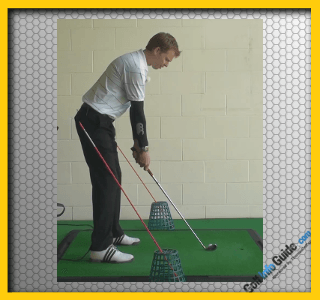
2. Correct Hand Position For Best Strike, Tour Alignment Stick Drill
The hand position can determine the quality of ball striking in a golf swing and most golfers overlook this element. At set up to the golf ball, position one of a set of tour sticks across the foot line, parallel to the target, to make sure that the body is aiming in the correct direction. This tour stick also gives a line of sight to set the hands in the correct position. Position this stick directly under the chin so that the hands hang loosely underneath the chin and over the stick.
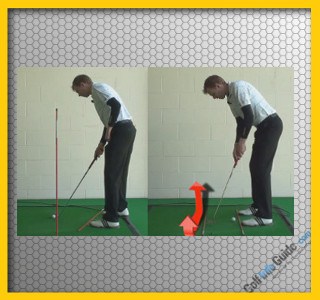
3. How To Hit A Golf Draw, Tour Alignment Stick Drill
The direction that you curve the golf ball has a lot to do with the kind of golf that you are able to play. There is a big difference between playing a draw and a fade, although it is certainly possible to play well while curving the ball either way. As long as you know which way the ball is going to turn while in the air, you should be able to navigate your way around the course successfully. In this article, we will look at the draw half of the equation. If you are able to learn how to produce a draw on a regular basis, you will love the options that suddenly open up to you from a course management perspective.
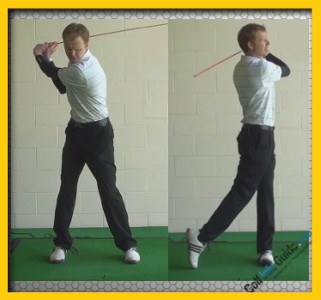
4. Generate More Club Head Speed With Just Your Hands, Tour Alignment Stick Drill
This is a great drill for generating speed in the golf swing and for hitting the ball much straighter, avoiding a slice golf shot (that is left to right for right handed golfers, and right to left for left handed golfers).
To release the golf club means to let the golf club overtake the hands through the impact area. This has two benefits. It creates more speed as the club is travelling faster than the golfer, and helps to hit the ball straighter as this means that the club face is turning, or closing, through the impact area. It is termed the release as it feels like there is a loss of control or a letting go of the golf club through impact, at the point when we feel that we need to hold on or control the golf club the most.
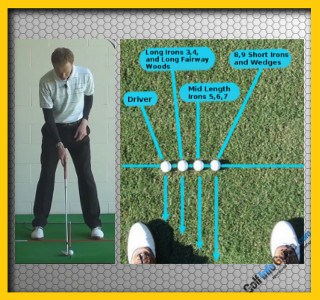
5. Correct Ball Position For Best Ball Strike, Tour Alignment Stick Drill
Why is the position of the ball so important in the set up? If we think about the arc of the golf swing as a circle around the body, that would mean that the lowest point of the circle in the swing is underneath the centre of gravity, the middle of the feet, and therefore, this is where the club will strike into the ground. If the ball is positioned too far forward, near the front foot in the stance, the club is more likely to bottom out in the swing too early, hitting the ground first. If it misses the ground, it will catch the ball too much on the upswing, sending it too high. Likewise, if the golf ball is too far backwards in the stance, there is more likelihood of slamming down on top of the golf ball, and sending the ball too low or driving it into the ground.
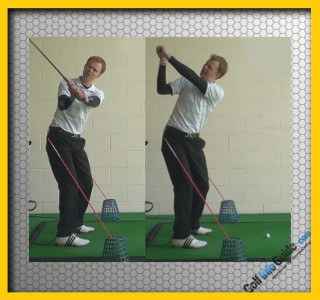
6. Best Way To Swing On Plane, Golf Tour Alignment Stick Drill
The swing plane in basic terms is the circle around the body that the club would ideally swing backwards and forwards on. It is determined by the angle of the spine at the set up position and the length of the golf club being used. When the club is swung on plane this means that the club travels straight through the golf ball towards the target at the impact area. If this is not the case, the club can be described as swinging through the ball in two other ways. For a right handed golfer, the club can pass right to left through the ball, which is also known as an out to in swing, or left to right through the ball, which is known as an in to out swing. These are opposite for left handed golfers.

7. How To Hole Short Putts, Tour Alignment Stick Drill
For the drill, use two tour sticks and place them both on the floor, lying parallel to each other, pointing towards the target, approximately four to five inches apart from each other. This gap depends a little on how wide the putter head on your putter is. The putter head must be able to sit comfortably in between the two sticks with approximately an inch wide gap either side of the putter. The sticks have now made a corridor pointing towards the hole, which will give good feedback on how the putter moves backwards and forwards through the stroke.
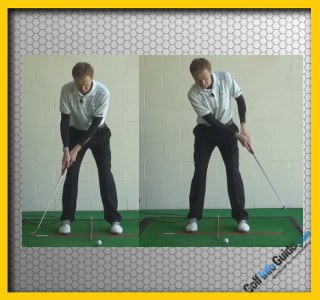
8. Putting With Best Ball And Shoulder Positioning, Tour Alignment Stick Drill
Using the tour stick that lies across the first stick to create a ‘t’, we can mark the position of the ball in between the feet. Ideally for a putt, the ball needs to be positioned consistently in the front half of the stance, approximately a quarter of the way in from the front foot. As the putting stroke is a rocking motion from the shoulders, the centre of gravity, and therefore, the bottom of the putting stroke will be in the middle of the stance. This means that the putter will swing slightly upward into the ball, producing a good top spin roll off the club face.
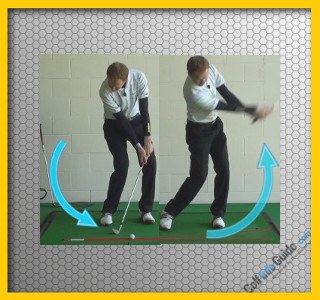
9. How Pros Impact The Ball, Tour Alignment Stick Drill
Whilst watching professional golfers hit iron shots on the television, we see the ball fly upwards and forwards having been struck correctly. Following the club drive through the ball, we always see an explosion of grass being struck out of the ground. This is called a divot.
Most golfers, when hitting an iron shot, do not do this. Instead of striking through the ball and into the ground, they tend to do two things. The first common shot is to hit into the ground early, taking a divot before hitting the golf ball. Here, the ground has been hit first and is often described as ‘heavy’ or a ‘fat’ shot. The ball does not travel very far as all of the energy created by the golfer disappears into the ground rather than into the golf ball, and can sometimes be quite painful!
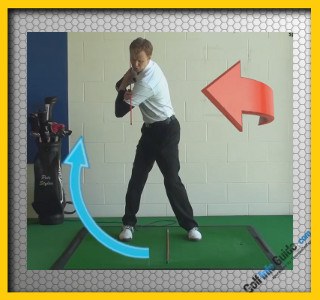
10. How To Create More Power Make A Full Turn, Tour Alignment Stick Drill
How do you think you should go about creating more power in your golf swing? Head to the gym to build some muscles? Hit the track to lose a few pounds so you can become more flexible? Maybe buy a new driver in order to take advantage of all of the modern technology that is used in the game today? While all of those steps could potentially add a few yards to your drives, nothing will have quite the same impact as learning how to make a full turn in your backswing. With a full turn, you give yourself plenty of time to accelerate the club head on the way down, meaning you can reach your swing speed potential right as the club contacts the ball.
Unfortunately, most amateur golfers don't make a full turn, and you might already fall into that category yourself. If you fail to take the time necessary to turn all the way back, you will rob yourself of power potential. As your swing gets shorter, the time you have to build speed is reduced, meaning you will never hit the same top speed with the club head that you could have reached with a full turn. While power isn't everything in golf, it sure is helpful – so taking the time to learn a longer backswing will provide you with a big boost out on the course.





